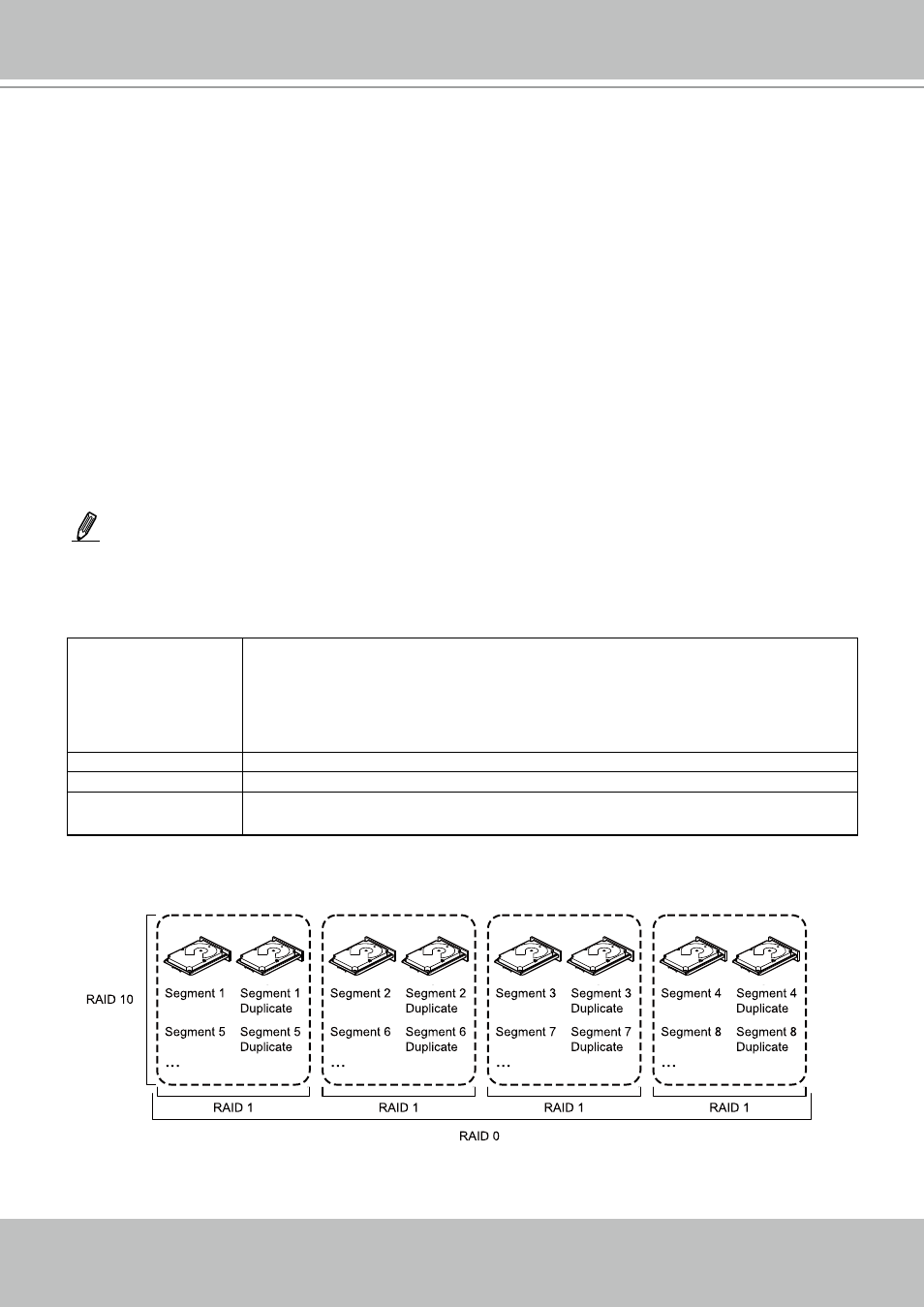Vivotek NR9682-v2 64-Channel NVR (No HDD) User Manual
Page 54

VIVOTEK - A Leading Provider of Multimedia Communication Solutions
54 - User's Manual
RAID 10
A RAID10 drive group is a combination of RAID level 0 and RAID level 1, and it consists of
stripes across mirrored drives. A RAID10 drive group breaks up data into smaller blocks and
then mirrors the blocks of data to each RAID1 drive group. The first RAID1 drive in each drive
group then duplicates its data to the second drive. The size of each block is determined by the
stripe size parameter, which is set during the creation of the RAID set. The RAID 1 virtual drives
must have the same stripe size.
Spanning is used because one virtual drive is defined across more than one drive group. Virtual
drives defined across multiple RAIDlevel 1 drive groups are referred to as RAID level 10, (1+0).
Data is striped across drive groups to increase performance by enabling access to multiple drive
groups simultaneously.
Each spanned RAID 10 virtual drive can tolerate multiple drive failures, as long as each failure
is in a separate
drive group. If drive failures occur, less than total drive capacity is available.
Configure RAID 10 drive groups by spanning two contiguous RAID1 virtual drives, up to the
maximum number of supported devices for the controller. A RAID10 drive group supports a
maximum of 8spans, with a maximum of 32drives per span. You must use an even number of
drives in each RAID10 virtual drive in the span.
Uses
Appropriate when used with data storage that needs 100 percent redundancy of mirrored
drive groups and that also needs the enhanced I/O performance of RAID 0 (striped drive
groups.)
A RAID10 drive group works well for medium-sized databases or any environment that
requires a higher degree of fault tolerance and moderate-to-medium capacity.
Strong points
Provides both high data transfer rates and complete data redundancy.
Weak points
Requires twice as many drives as all other RAID levels except in RAID 1 drive groups.
Drives
4 to 32 in multiples of 4 — The maximum number of drives supported by the controller
(using an even number of drives in each RAID 10 virtual drive in the span).
NOTE
Other factors, such as the type of controller, can restrict the number of drives supported by RAID 10 virtual drives.
The following table provides an overview of a RAID10 drive group.
In the following figure, virtual drive 0 is created by distributing data across four drive groups (drive groups 0
through3).
